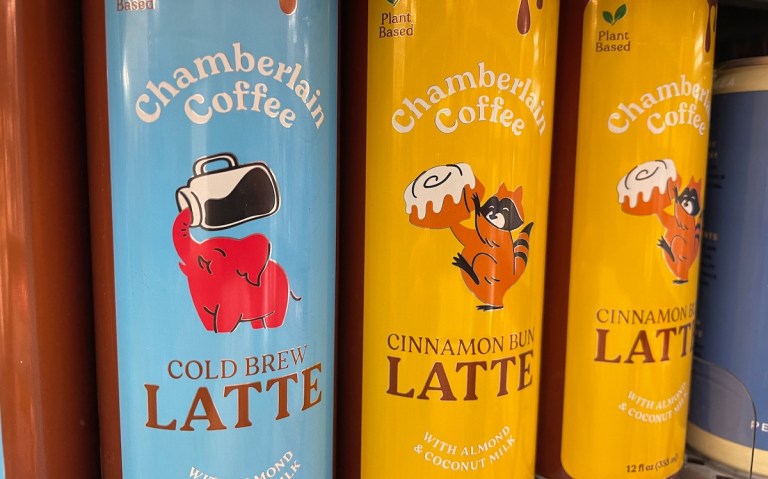Chamberlain Coffee CEO: ‘Subscribe & Save’ Extends Loyalty-Building Opportunity Beyond D2C

As brands face increasing challenges driving direct-to-consumer engagement, Chamberlain Coffee is seeing Amazon’s Subscribe & Save program provide opportunities to create long-term customer relationships outside the company’s direct channels.
Chris Gallant, CEO of the coffee brand, which sells both D2C and via outside retailers, told PYMNTS in an interview that the eCommerce giant’s subscription features provide a way to drive loyalty among consumers looking to shop from as few places as possible.
“As we launched on Amazon, we’ve seen a lot of new consumers acquired through that channel really ramping up subscription because it’s that basket play, and a lot of people leverage Amazon like they would a grocery store,” Gallant said. “…We’ve seen that subscription business really take off.”
He added that the brand’s D2C subscriptions on its own site continue to perform well because they offer exclusive products and perks unavailable elsewhere. However, for consumers looking for a basic option for the brand’s “standard, core coffee,” Amazon Subscribe & Save has been a huge driver for acquisition and retention.
The program holds a large share of consumers’ total retail subscription spending. The PYMNTS Intelligence report “The Replenish Economy: A Household Supply Deep Dive,” which drew from a survey of more than 2,000 U.S. consumers, found that 42% of retail subscribers overall participate in Amazon’s Subscribe & Save program.
Working Hard or Hardly Working
Chamberlain Coffee’s consumer acquisition comes as winning customers in the pure-play D2C space becomes increasingly difficult. Gallant highlighted shifting metrics in paid media efficiency, noting a decreased effectiveness in traditional marketing methods.
“It’s certainly been a more challenging market overall for all brands on [D2C],” Gallant said. “In particular, with goods like coffee that tend to be basket goods for grocery retail, what we see is consumers looking to [D2C] for a different experience now.”
That is, it is no longer enough for brands to offer a high-quality product — there must be something different about what the D2C site offers, be it exclusive deals, limited-edition products or compelling content.
“[D2C] took off like crazy during COVID,” he said. “It’s coming back down now. But if you look at the trend line, it’s really just reverting to the trend. It’s not necessarily dipping.”
The Social Commerce Boost
As the efficacy of these traditional marketing channels wanes, Gallant discussed the imperative of generating organic traffic through social media and other alternative channels, noting that collaborating with influencers and leveraging user-generated content have emerged as effective means of fostering brand advocacy and driving conversions. Just posting high-quality photography no longer cuts it.
“The beautiful pictures of the product are … par for the course, maybe table stakes for a brand,” Gallant said. “[We’re] creating things that are highly engaging. So, we have things like your horoscope, we have funny graphics that we put up, or we have photos of [founder and celebrity influencer] Emma [Chamberlain]. These are the sorts of things that really drive the traffic to the site.”
Social media can be a valuable tool for driving product discovery and education, although it rarely drives conversion on its own, according to the PYMNTS Intelligence report “Tracking the Digital Payments Takeover: Monetizing Social Media.” The study of nearly 3,000 U.S. consumers revealed that while 43% browse social media to find goods and services, only 14% ultimately buy those goods and services via social media.
Winning the Gen Z Consumer
The coffee brand especially targets young consumers, who tend to be D2C brands’ best customers. The PYMNTS Intelligence report “The Online Features Driving Consumers to Shop With Brands, Retailers or Marketplaces,” which drew from a survey of more than 3,500 U.S. consumers, revealed that in digital shopping, Generation Z consumers are the most likely to want to buy directly from a brand and the least likely to prefer shopping via merchants’ online stores.
Specifically, 43% of Gen Z said they definitely or probably prefer a brand’s own online store —above the 28% of the population as a whole that said the same. On the other hand, 23% of these young consumers said they definitely or probably prefer a merchant’s online store, while a greater 32% of consumers across generations said the same.
Looking ahead, Gallant noted that he expects the D2C space to further differentiate from traditional retail channels as consumers demand greater specialization from brands’ direct platforms.
“I’m really paying attention to how brands are starting to transform what they’re doing,” Gallant said. “Are they making their [D2C] site more of a deep content play? Are they making it more of a limited-time offering site? How are they thinking about driving traffic to their retail partners versus [D2C], if you look at their social and email and affiliate programs? I’m trying to understand how other brands are thinking about the balance between retail partnerships and their own [D2C] site and how they evolve each of those platforms.”
For all PYMNTS retail coverage, subscribe to the daily Retail Newsletter.